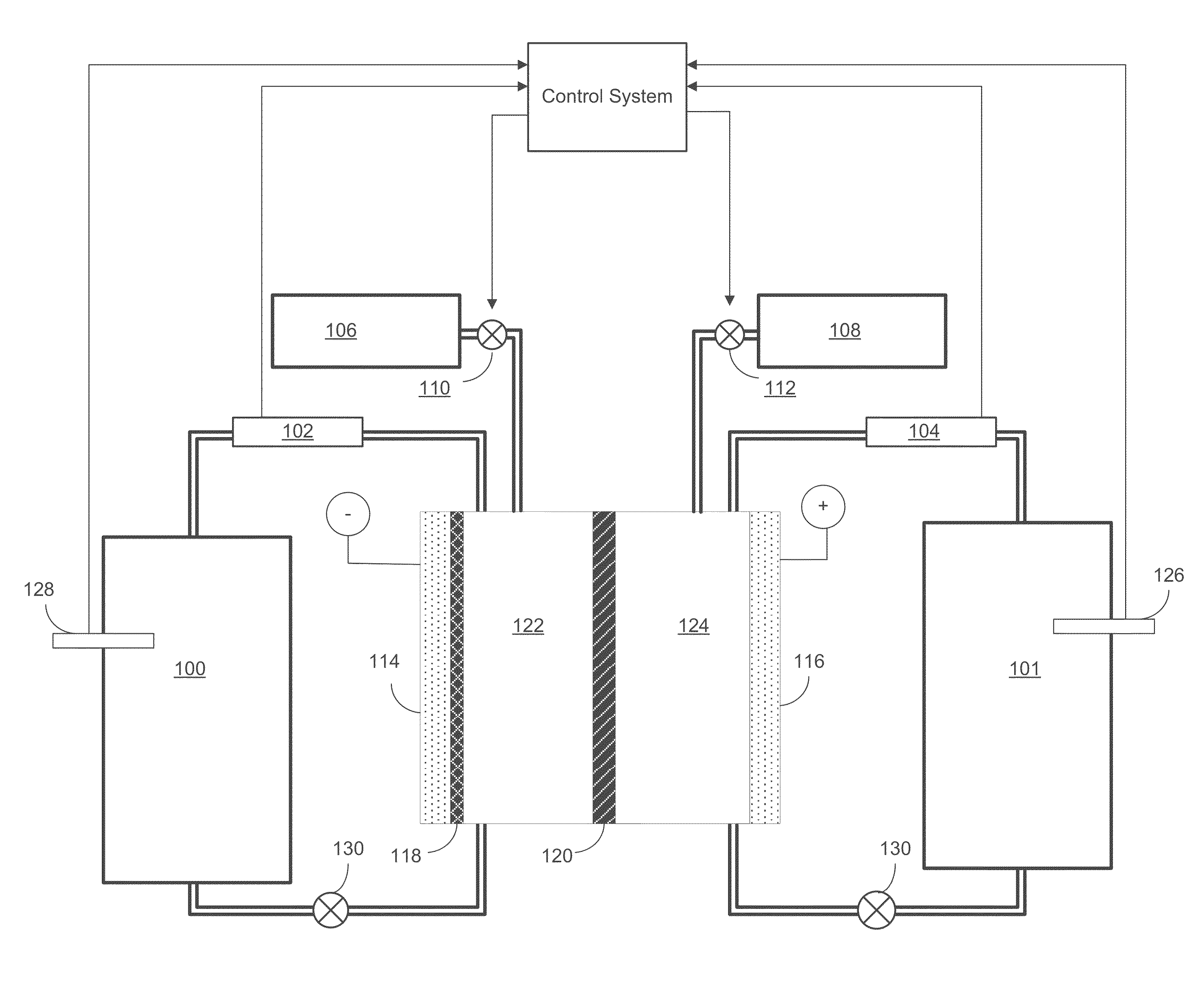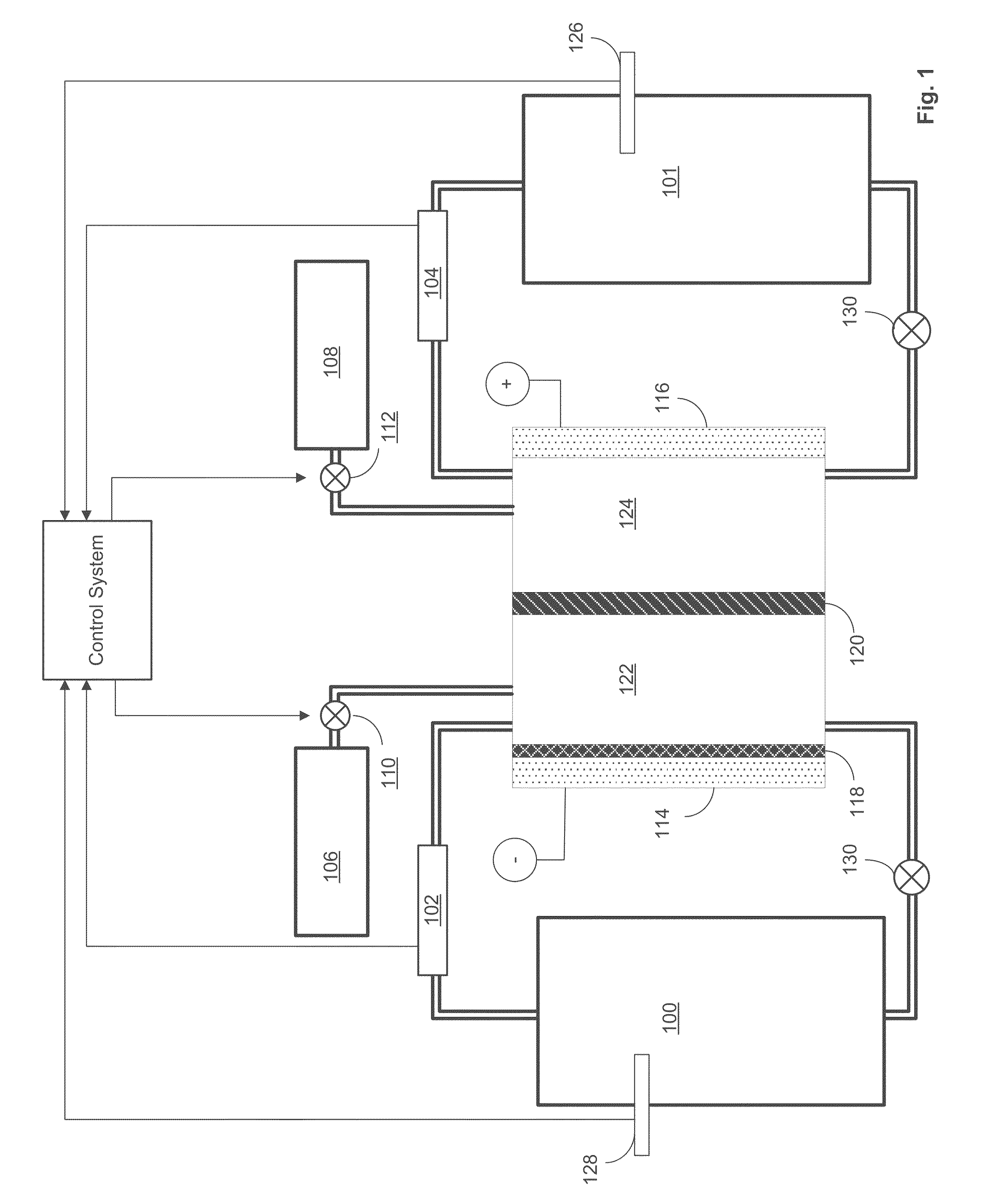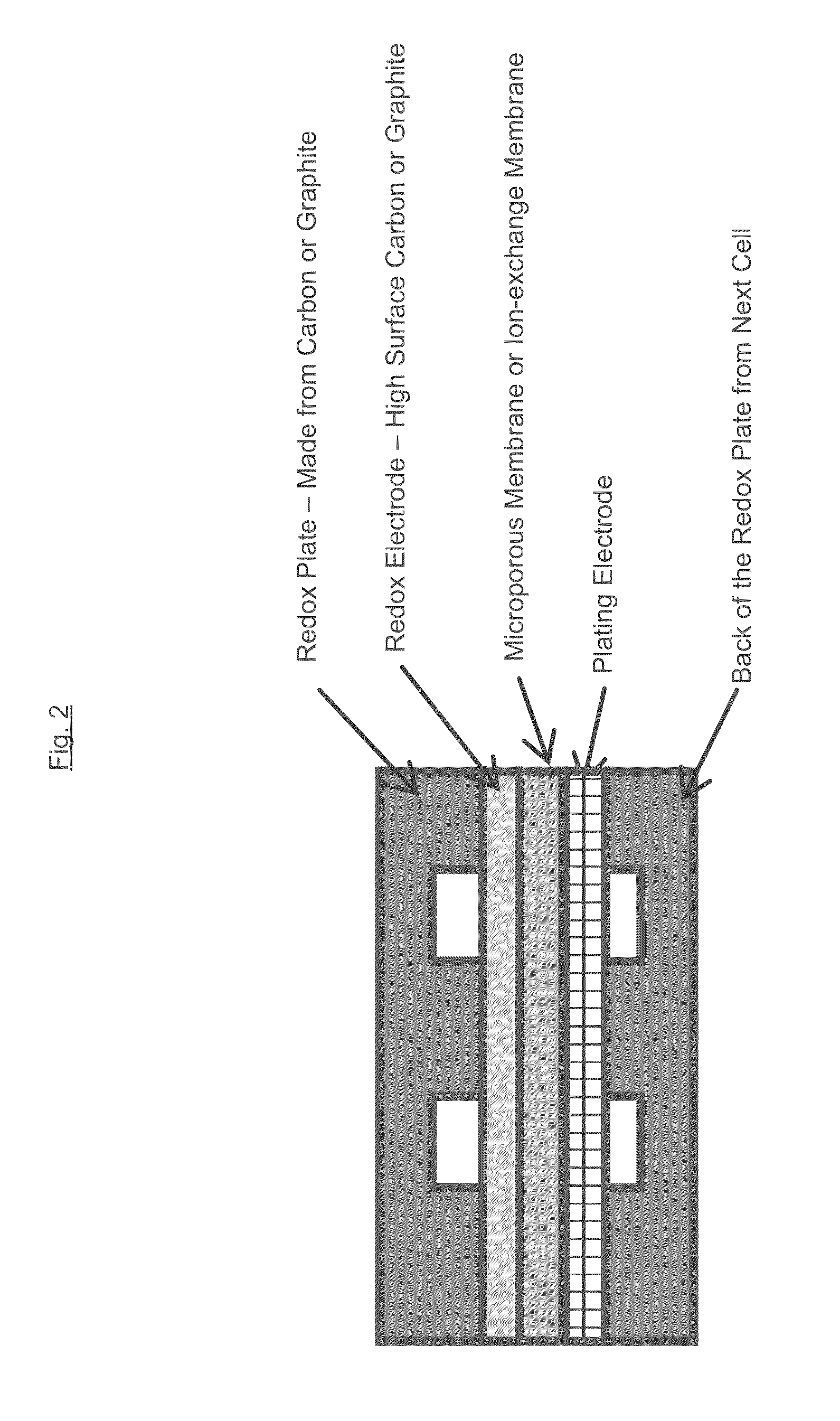Methods to prepare stable electrolytes for all iron redox flow batteries
a technology of redox flow battery and stable electrolyte, which is applied in the direction of electrochemical generator, cell components, indirect fuel cells, etc., can solve the problems of limited energy storage capacity of redox battery, limited practicality in commercial applications, and low cycling performance, so as to preserve coulombic efficiency and stabilize ferric ions
- Summary
- Abstract
- Description
- Claims
- Application Information
AI Technical Summary
Benefits of technology
Problems solved by technology
Method used
Image
Examples
Embodiment Construction
[0021]As discussed above, the plating electrolyte used in the all iron redox flow battery (IFB) may provide a sufficient amount of Fe2+ so that, during charge, it can accept two electrons from the negative electrode to form Fe0 and solidify onto a substrate. During discharge, the solidified Fe0 may then lose two electrons, ionizing into Fe2+ and be dissolved back into the electrolyte. The equilibrium potential of the above reaction is −0.44V and thus this reaction provides a negative terminal for the desired system. On the positive side of the IFB, the electrolyte may provide Fe2+ during charge which loses electron and oxidizes to Fe3+. During discharge, Fe3+ provided by the electrolyte becomes Fe2+ by absorbing an electron provided by the electrode. The equilibrium potential of this reaction is +0.77V, creating a more positive terminal for the desired system.
[0022]The IFB provides the ability to charge and recharge its electrolytes in contrast to other battery types utilizing non-r...
PUM
| Property | Measurement | Unit |
|---|---|---|
| pH | aaaaa | aaaaa |
| optical probe | aaaaa | aaaaa |
| absorption spectra | aaaaa | aaaaa |
Abstract
Description
Claims
Application Information
 Login to View More
Login to View More - R&D
- Intellectual Property
- Life Sciences
- Materials
- Tech Scout
- Unparalleled Data Quality
- Higher Quality Content
- 60% Fewer Hallucinations
Browse by: Latest US Patents, China's latest patents, Technical Efficacy Thesaurus, Application Domain, Technology Topic, Popular Technical Reports.
© 2025 PatSnap. All rights reserved.Legal|Privacy policy|Modern Slavery Act Transparency Statement|Sitemap|About US| Contact US: help@patsnap.com



